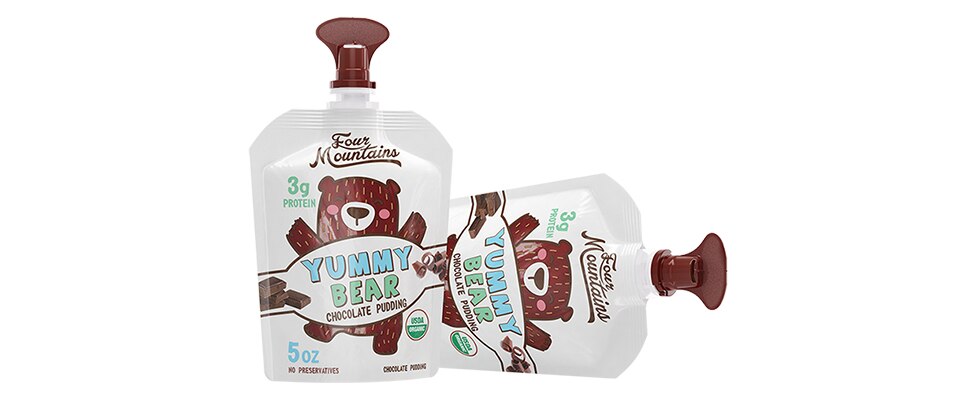
What we learned from the top packaging innovators of 2018
It is a way for conversation to lead collaboration. A way to inspire continued innovation and to push towards what’s next.
As we look back on the 2018 Packaging Innovation Awards it is clear that this is more than simply recognition of innovation. It is a way for conversation to lead collaboration. A way to inspire continued innovation and to push towards what’s next.
Let’s listen to what three award winners have to share about the innovation process.
Procter & Gamble set out to “reinvent the bottle”
Air Assist Liquid Packaging Technology
Driven by sustainability, P&G Research Fellow Ken McGuire explained the team’s journey to create a product reducing material use while performing better than traditional bottles. After experimentation and prototyping, the team discovered that compressed gas was the ticket to delivering the best aspects of a sustainable pouch and a rigid plastic bottle, all in one package. By starting with the “squeezability” and resilience of flexible plastic films, engineers could then use compressed gases like nitrogen to target the precise places where the bottle would need to be rigid for structure.
One look at Air Assist and it becomes apparent something’s missing — the cap. Swapping it for a one-way valve and vent that only dispenses when the bottle is squeezed made for better one-handed use. It also translated to a significant drop in overall plastic use. As it stands now, the application uses 50 percent less plastic than traditional rigid bottles, all while providing cleaner dispensing, more controlled dosing and more convenient one-handed use than your average pouch.

Scholle and IPN create a shelf-stable and fresh aseptic pouch
CleanPouch Aseptic Spouted Pouch System
Sterilizing food is only half the battle. A shelf-stable package itself also has to be sterilized, and done in a way that doesn’t leave its contents open to contamination — or alter their flavor. Take traditional hot-fill processing. The food’s already sterile, but its packaging isn’t. This method keeps the food at high temperatures long enough to sterilize this package, which can alter the taste of the food in the meantime.
Thanks to some clever engineering, they found a way to sterilize both food and package separately and combine the two thereafter. The key is an innovative combination of spout, plug and cap. The CleanPouch lives up to its name and is sterilized before receiving its contents. When the package moves down the assembly line, its plug can be plucked from the spout. Then, after sterilized food has been filled, that same plug can be resealed hermetically. Later, a cap is combined with the plug to make it a tamper-proof, consumer-friendly item.

Clean Cut Technologies improves healthcare and reduces waste
Dual Hoop Catheter DISK
CleanCut was presented with a challenge - design a DISK retaining and protecting multiple catheters, while not increasing the footprint of the original DISK. According to Brian Whalen, Director of Sales and Marketing at CleanCut, the Dual Hoop Catheter DISK is the most efficient packaging solution available today for catheter or guidewire based medical devices. The design lets multiple catheters and guidewires of varying sizes – along with any procedural components – to be packaged in a convenient, all-in-one system. Gone are the days of opening and assembling extra pouches, instructions for use, labels, shelf cartons or corrugated shipping boxes for each individually packaged component.
The design of the Dual Hoop Catheter DISK reduces packaging waste by 20-30%. The design also allows surgical teams to unpack and use equipment quickly – giving more efficient care by reducing patients time under anesthesia.

Sealed Air makes our everyday shipping boxes more sustainable
StealthWrap
If you buy shoes online, they’ll show up on your doorstep in not just a shoebox, but a shoebox inside a larger box, sometimes surrounded by cushioning materials to prevent damage. Dr. Natarajan S. Ramesh, a senior engineering fellow in Product Care Development and Innovation at Sealed Air, saw this as a dilemma their company could help address. “The strategy was, how do you rethink the box?” he said. “And the end result was you don't need it.”
StealthWrap uses plastic film layers to do the work of all that bulky packaging. Imagine that same shoebox being encased in a film that shrinks and adheres to the shoebox’s dimensions, creating a shell packed with billions of particles that maintain the wrap’s strength, toughness and protective properties throughout the entire shipping process. And with 99% opacity, no one can see through to the product, giving customers the privacy they expect.
It’s incredibly thin, yet almost completely opaque. It’s extremely flexible and easy to open, yet tough enough to withstand the rough handling of global shipping. All of this is possible because of a combination of two sciences: multilayer plastic film production and nanotechnology. The 29 microlayers of polymers used to produce the film impart both strength and flexibility, while billions of nano-pigments are added to provide opacity without disrupting the structure of the plastic. One roll of StealthWrap film can eliminate the use of 1,000 corrugated boxes — which helps eliminate packaging waste by as much as 90 percent. Plus, because a StealthWrap package is smaller than the box-in-a-box method, it reduces billable weight by up to 18 percent.






